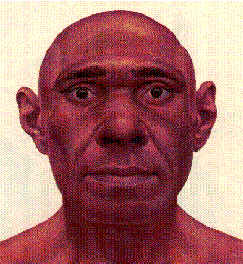No sale.
Here's a picture of a skull of homo Heidelbergensis, which your link claims is the ancestor of modern man:

and here's a neanderthal skull:

Why don't you tell me which is closer to us and, assuming you'd agree with me that the neanderthal is significantly closer to us, then if the neanderthal has been eliminated as a plausible ancestor by DNA studies, then how could that thing (homo heidelbergensis) be a plausible ancestor?
My own view is that the neanderthal was the proto-human lord of some previous creation and that all the rest of the hominids were apes or glorified apes. Recent reconstructions of the neanderthal indicate that you could dress him properly and put him in New York in daylight and people might stare at him but they wouldn't run.

Put Heidelbergensis in NY, and people would run.